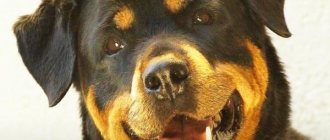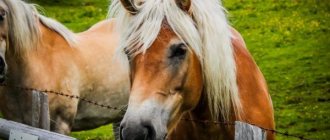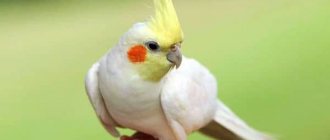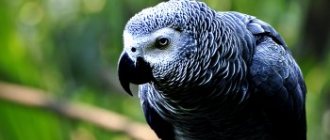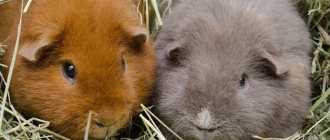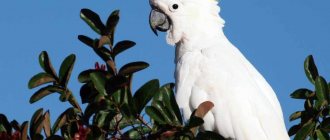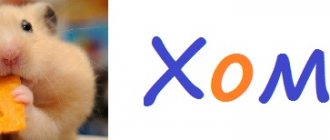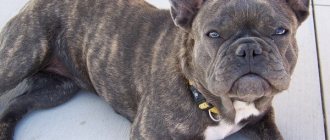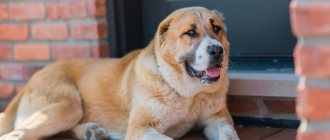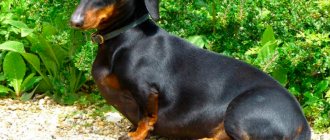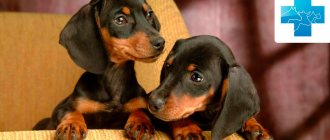When a cute and funny husky puppy appears in the house, the last thing its owners think about is how long dogs of this breed live.
Vaccinations, first walks, exhibitions, sports competitions - these are the things that usually worry the owners of young dogs.
But time passes, and sooner or later the moment comes when the owner first notices gray hair on the face of his husky.
And then the owner thinks about how he can prolong the life of the pet?
Life expectancy for boys and girls
On average, the life expectancy of Husky is 12-15 years.
However, how long a pet will live depends to a large extent on the conditions of its keeping, diet, physical activity and many other reasons. Only if all these conditions are met will the husky live to these years.
If the pet is poorly cared for, not given enough walks, does not take care of its health, and at the same time is fed anything, then the dog will hardly be able to live up to 10 years.
IMPORTANT!
With good care and maintenance, the life expectancy of a husky can reach 25 years.
Speaking about who lives longer - boys or girls, it should be noted that males of this breed have a predisposition to diseases of the genitourinary system, which can significantly shorten their life.
It is also believed that older Husky males are more likely than females to develop hypertension, which can also affect their life expectancy.
However, Husky girls, due to improper breeding or under the influence of certain drugs that affect reproductive function, can also develop diseases of the genitourinary system, for example, pyometra, which often leads to very serious complications and even death.
If the owner of a husky does not intend to get offspring from his dog and at the same time wants to prolong its life, he can resort to sterilization or castration.
Health, typical diseases
How long do spaniels live at home?
Huskies are distinguished by good health and endurance and, with proper care, may not have health problems until old age. Average life expectancy is 12-15 years.
Representatives of this breed have some physiological characteristics that are considered pathologies in other dogs: increased blood clotting and an increase in heart size. This is due to the fact that the dogs were bred in northern regions with harsh climates, and their bodies were forced to adapt to heavy physical activity.
However, huskies have a number of genetic pathologies that pose an uncontrollable health threat. They are often diagnosed with hip dysplasia, a serious disease of the musculoskeletal system. The clinical picture is pronounced: the dog begins to limp, whine in pain, does not show activity and lies most of the time.
In the absence of appropriate treatment, the disease progresses and can lead to immobilization of the pet. At the initial stage, medication and physiotherapeutic treatment can help, but, unfortunately, dog owners often turn to the veterinarian only when the disease has taken an advanced form. In such cases, the only way to save the animal is surgery.
Huskies are also susceptible to ophthalmological diseases, such as progressive fiber atrophy and juvenile cataracts.
Fiber atrophy is characterized by dystrophic changes occurring in the ocular cornea. Typically, both eyes are affected. The prognosis for the disease is unfavorable - complete blindness.
Juvenile cataracts occur in young Huskies (under two years of age). A thickening in the form of a spot appears on the pupil, impairing vision. Surgery is indicated.
How long do dogs live when kept on the street?
Living conditions similar to those to which huskies have been accustomed for centuries help to prolong the life of these dogs.
If for representatives of many other breeds living in a yard or in an enclosure in a private home can negatively affect their health, for huskies this, on the contrary, is the best possible living conditions.
Clean air, the opportunity to move as much as the dog wishes and the natural change of weather have a beneficial effect on their well-being.
A Husky kept outdoors can live up to 20-25 years.
Expert opinion
Kozhevin Semyon Kirillovich
Expert dog handler.
“On average, Siberian huskies live 12-15 years. However, how long a pet can live primarily depends on where it is kept. Dogs living in an apartment and suffering from lack of exercise can live 10-12 years. In rural areas, huskies have a good chance of living to 20 or even 25 years. As for the lifespan depending on the gender of the dog, in most cases, it does not significantly affect how long the pet will live.”
Origin of the breed
Huskies are the result of crossing domestic dogs with wild wolves. They look like forest predators and have similar genes.
The Chukchi were the first to breed this breed in Neolithic times. Residents of the Far North needed a dog that would not be afraid of severe frosts and could transport cargo. By crossbreeding a wolf and a dog, they solved these problems. Huskies have become indispensable assistants in reindeer herding, hunting and transporting goods.
In the 17th-18th centuries of the last century, active development of the northern lands took place. And the husky population increased proportionally. The "Gold Rush" in the States caused a sharp jump in demand for sled dogs. Americans began to willingly buy such animals in the north. They were given a common name, in 1934 the breed was officially registered and a standard was designated.
This is interesting: Peculiarities of husky fur and eye color
Dog age compared to human years
| Husky dog age | Person's age |
| 1 year | 15 years |
| 2 years | 24 years |
| 3 years | 28 years |
| 4 years | 32 years |
| 5 years | 36 years |
| 6 years | 42 years |
| 7 years | 47 years old |
| 8 years | 51 years old |
| 9 years | 56 years old |
| 10 years | 60 years |
| 11 years | 65 years old |
| 12 years | 69 years old |
| 13 years | 74 years old |
| 14 years | 78 years old |
| 15 years | 83 years old |
| 16 years | 87 years old |
Possible complications
Once a husky has given birth safely, there is a high chance of postpartum complications. In the following cases, you need to call a veterinarian:
- not all the afterbirths came out, but the attempts stopped;
- Not all puppies were born, lumps are still palpable, but the dog has stopped pushing;
- the dog continues to push, even though all the puppies have already been born;
- cramps after childbirth;
- temperature increase;
- after birth, the dog’s gait is uncertain, clumsy, this may indicate a lack of calcium;
- mastitis.
Pregnancy and childbirth in huskies, although small, are still different from other breeds
It is very important that the owner thinks carefully about his decision to breed a dog, because carrying babies and further caring for them will slightly spoil the pet’s exterior
True, with proper postpartum care, within a couple of months the husky will again be the same beauty, even better!
How to determine the age of a husky?
Teeth
Most experts determine the age of dogs by the degree of wear and appearance of their teeth. This method is considered quite reliable, however, depending on the conditions in which the husky was kept and what it was fed, it can give an error of up to two years.
What do teeth look like in dogs of different ages:
- 1-2 years. The teeth are snow-white, strong and sharp, and their edges have protrusions shaped like trefoils.
- 2 years. The Husky's teeth are still white and shiny, but the ridges on the edges are starting to wear down.
- 4 years. The teeth become grayish and less shiny. The protrusions on their edges are almost invisible by this age.
- 5 years. The color of the teeth changes to yellowish, and the edges of the fangs become dull.
- 6-8 years old. Husky incisors take on a concave shape, and by this age the fangs already look very blunt. There may also be a predisposition to accelerated formation of tartar.
- 8-10 years. The canines are completely blunted and appear shorter than at a younger age. The hooks take on the shape of ovals, and the shade of the teeth becomes yellow or brownish.
- 12 years or more. The teeth gradually loosen, making it more difficult for the husky to chew solid food. Some teeth may even fall out, which often leads to a bad bite in the dog.
In addition to determining age by teeth, there are other methods. True, they are less accurate, so they can be used to determine not even the age itself, but the age category of the animal.
Wool
Young huskies have thick, dense hair, and the coat itself looks well-groomed and neat.
In an older dog of this breed, the hairs become coarse, but at the same time brittle. The fur begins to get dirty faster and looks uneven and sometimes ragged.
Eyes
In older Huskies they look cloudy and set deeper. At the same time, the dog may develop eye diseases, for example, glaucoma or cataracts.
Physical activity
Huskies are usually very active until old age. But there comes a time when even their irrepressible activity begins to decline. An older husky moves less than in his youth, he rests more often and is not as willing to take part in family games as before.
NOTE!
In older huskies, due to insufficient physical activity, muscle tone may weaken; in addition, older pets are more prone to obesity than younger dogs.
Norms and feeding regime for a puppy and an adult husky
First, they decide on the type of feeding: buy industrial feed or cook it yourself. Different enzymes are responsible for digesting dry kibble and natural foods. With a mixed diet, digestion does not have time to rebuild, food is poorly absorbed, and fermentation begins in the intestines.
The daily amount of dry food is written on the packaging. With natural feeding, you will have to calculate it yourself. The volume of food is determined by body weight:
These are average norms; the specific amount of food depends on the animal’s mobility and physical activity. If the ribs cannot be felt, it means the pet is overfed; if they stick out too much, there is not enough food.
Up to 2 months, the puppy is fed 5-6 times a day; as he grows up, the portions increase and the number of feedings decreases:
| Age, months | Number of feedings |
| up to 2 | 5 – 6 |
| 2 – 3 | 4 – 5 |
| 3 – 6 | 4 |
| 6 – 8 | 3 |
| 9 and older | 2 |
Adult dogs are fed twice a day, preferably by the hour: in the morning no earlier than 8-00, in the evening no later than 22-00. The bowl of food is left for 20 minutes, then removed until the next feeding.
Main causes of premature death
Huskies can be susceptible to a number of specific diseases that can significantly reduce their life expectancy.
For example, such as degenerative myelopathy, which leads over time to paralysis of the limbs, or epileptic seizures, which, starting at the age of 7 months to 3 years, progress over time and become more frequent and prolonged.
There is no cure for these ailments, and therefore, when they reach an extreme stage, the animal often has to be euthanized to save it from suffering.
Males of this breed have a predisposition to diseases of the genitourinary system, including malignant tumors.
Liver shunts that occur in Huskies, leading to disruption of the blood supply to the liver, can also be fatal.
However, given the inquisitive and overly active nature of huskies, their premature death is not always due to illness. It is often caused by various accidents when a dog, for example, gets hit by a car because he was chasing a cat or dies after eating a poisoned rodent.
CAREFULLY!
The tendency to hunt small animals can also cause a dog to become infected with a serious infectious disease, the carriers of which are often rodents.
To avoid this, in addition to a harness and leash, your pet should purchase a muzzle for walking.
Huskies can suffer due to their insatiable curiosity and penchant for mischief. It happens that, being left alone all day, a dog spoils things out of boredom and sometimes swallows pieces of fabric or, for example, wood. This does not always lead to serious consequences, but sometimes such pranks end in blockage or perforation of the stomach or intestines.
This is why it is so important to reduce the likelihood of an accident. To do this, you need to carefully monitor your pet, train him, and if he is left alone all day, you need to provide him with a sufficient number of safe treats and toys. And everything that could pose a danger to the husky or be swallowed by it should, if possible, be removed to a place inaccessible to the dog.
If you keep a dog in your private home, then you need to make sure that the area is surrounded by a reliable fence, the height of which is at least 1.8 meters.
During repairs, it is necessary to keep varnishes and paints away from your pet and keep him away from painted and not yet dried surfaces. When treating the garden from pests or rodent baiting, it is better to keep the dog in the house for some time.
These dogs have a wild, wolf-like appearance
Michael Caine calls for coronavirus vaccination
Airy cream and thin pancakes: preparing an unusual cake a la tiramisu
Scientists have explained the dangers of turning 48 and how to overcome the crisis
The Husky is a medium-sized dog with a light, compact body. The bodies of these dogs are very well proportioned and extremely muscular. They may have an interesting black and white or red and white pattern on their heads. Their triangular ears stand upright, and their almond-shaped eyes are attentive and penetrating. Huskies always hold their heads high, and their straight backs end in bushy tails. The undercoat is quite dense, and the coat is close to the body and can come in a variety of colors. Male huskies can be between 53 and 60 centimeters tall at the withers and weigh between 20 and 27 kilograms, while females are slightly smaller - they are between 51 and 56 centimeters tall at the withers and weigh between 16 and 23 kilograms.
How to extend the life of a pet?
In order for a pet to live as long as possible, the owner must take care to provide it with proper care and feeding.
Physical activity is of great importance for huskies, therefore, these dogs need to either participate in races, or engage in any other sports discipline, for example, agility, or simply walk a lot and attend training classes.
Also, the owner of a husky must monitor the health of the animal - get vaccinations on time and treat the dog against internal and external parasites, and also, if the pet gets sick or has an accident, immediately seek veterinary help.
NOTE!
If the pet is already 7-8 years old, the husky owner must take the dog to the clinic annually for a preventive examination.
Character
This is a very active dog, loves exercise, games, and taking children on sleighs. Non-aggressive, friendly even with strangers, so guarding the house is not an activity for huskies.
An independent and smart dog, capable of making independent decisions. Quiet - it is almost impossible to hear barking. Sociable, gets along well with people, children and other animals. She will never bite or growl at a baby. He has a calm and affectionate disposition. It perceives one master and obeys only him. It can be stubborn, so it is necessary to educate it from the moment it appears in the house. He easily spoils things if he is not walked.
Hunting with a Siberian Husky is comparable to hunting with a husky. Only the Siberian is faster and more resilient. He perfectly picks up the trail, searches for animal holes, and brings back killed prey. Works both independently and in a team. When raising a puppy to become a hunting dog, you should teach it to voice when it holds prey.
Proper nutrition
Huskies are undemanding when it comes to food - you can feed them both ready-made food and natural food. At the same time, it is very important that the pet’s diet when feeding natural food contains a sufficient amount of meat and meat products.
You must add oatmeal, rice or buckwheat porridge, raw or boiled vegetables (carrots, cabbage, zucchini, pumpkin) and fermented milk products (natural yogurt, kefir, cottage cheese) to them. In addition, when feeding naturally, it is necessary to periodically add vitamins to the food.
If a husky eats ready-made food, then it must be fed with food of at least premium quality, suitable for age, size and physical activity.
The right diet
An important condition for keeping a husky is the feeding system. Pet food can be homemade products or dry store-bought formulas.
You cannot mix food types. This will lead to gastrointestinal problems.
When compiling a diet, you should take into account its calorie content, as well as the characteristics of the breed’s digestive system.
Huskies can eat fatty meats. Their metabolism is different from other dogs. Meat in the diet should be about 75 percent. It is preferable to give the product raw. Offal and sea fish need to be boiled.
For proper metabolism, the dog must eat porridge. Rice, oatmeal or buckwheat are best.
Vegetables that are good for huskies include cabbage, carrots, zucchini, pumpkin and legumes. Fermented milk products are recommended low-fat. Eggs are allowed to be given 1-2 times a week. To strengthen your dog’s teeth, you need to chew on large bones and take additional vitamins.
When feeding dry formulas, you need to choose premium varieties that are suitable for the pet’s age and breed. If your dog eats dry food, he will need to drink more water. There is no need to take any special vitamins.
Quality maintenance and care
Husky coat care consists of infrequent brushing (2 times a week) and bathing 2-3 times a year. You should wash your dog only with special shampoos suitable for your pet.
Eyes and ears must be inspected every day and cleaned when dirty. To clean the eyes, use a cotton pad on which a special product is applied. The ears are cleaned with a cotton swab, on which liquid is also applied to clean them.
Husky nails are trimmed using a nail clipper if necessary. But, usually, dogs of this breed wear them down well themselves during walks.
To clean the teeth, it is recommended to give your pet special treats or soft cartilage.
Mating
Usually the bitch is asked to be brought to the male, since the male feels much calmer in his territory and does not require more time to get used to. If the animals have not met each other before, then it is better to be present for some time to make sure that they get along. In general, “Chukche dogs,” guided by their instincts, cope without human intervention, unlike many other dogs. Sometimes the owner holds the female.
Some breeders still prefer to be present during the mating process - in this matter the decision is yours. Often, after the first time, a repeat visit is made, this prevents the possibility that not all eggs are fertilized. But this trip is already the choice of the expectant mother.
Do not make any decisions before 72 hours, this is when sperm is active. During this couple of days, it is recommended to observe your household, namely, the manifestation of activity towards male dogs. If the pet resists re-breeding, then you should not do this. Otherwise, another meeting is possible.
Caring for an older dog
Everyday care for an older husky remains almost the same as when he was young. The main thing that a dog owner should monitor is the health of the pet.
To do this, you need to regularly take him for preventive examinations to the veterinary clinic and carefully monitor that the aging husky does not overeat and gets enough exercise.
In no case should you neglect daily eye examinations, because this is the only way to notice a change in their shade or cloudiness, which may indicate the onset of the disease.
IMPORTANT!
It is necessary to keep chronic diseases under control - often such ailments return with age and are much more severe than in youth.
Health
Like a true northerner, the dog is in fairly good health, but you must constantly monitor the well-being of your pet. This breed may suffer from diabetes and thyroid problems. They experience eye diseases, including cataracts, glaucoma, and corneal dystrophy. The dog may have hip dysplasia. It is rare, but epilepsy also occurs. It cannot be completely cured, but proper treatment reduces the frequency and intensity of seizures.
Another disease that dogs are susceptible to is anthrax.
An important fact: it is necessary to routinely vaccinate animals and monitor their condition in order to prevent many diseases and avoid problems. Examining your ears, eyes and teeth should become a habit.
The condition of your coat can also say a lot about your health.
Be sure to pay attention to your gait to immediately identify any lameness that may occur due to muscle damage. Lameness may be the first sign of problems with the dog's musculoskeletal system.
Weight must also be constantly monitored; excessive thinness and obesity significantly weaken the health of the pet. In order for the weight to be optimal, nutrition must be balanced, regular and of high quality. You should not overfeed the animal, but giving too little food is also harmful.
Be sure to carry out timely deworming. When walking in the summer, it is better to choose shaded places, because it does not tolerate heat.
How long do Huskies live at home? Proper care and maintenance ensure that the pet will delight its owner for a long time and can live happily for more than 15 years.
Where to start training a puppy
Training should be gradual. Don’t try to invest all the necessary knowledge into your furry baby in a day. Start by getting your puppy used to his name. Call him by his name when it’s time for him to eat, if the fluffy one needs to be woken up, stroke him and affectionately call him by name. You will see that in a matter of days the four-legged dog will get used to its nickname.
Try to show your authority. Moreover, if the dog is present when communicating with other family members, then do not give up your position - after all, if the animal sees that you have given slack, it will immediately “sit on your neck.” Do not forget that huskies have long lived in packs and obeyed the leader. Now their owners act as leaders for them.
The simplest commands in training dogs are: “Near!” and “Come to me!” They are very easy to teach your dog with treats and constant praise. But what to do when the company of a puppy is completely inappropriate? For example, he begins to behave very annoyingly as soon as guests cross the threshold of your house - he barks, gets in the way, tries to play with strangers. The answer is simple - you should simply ignore the baby. The dog will immediately understand that games and entertainment are not interesting to anyone, which means you shouldn’t distract the guests’ attention to yourself.
Here are a few more recommendations that it is advisable to follow when raising a husky:
- You should not protect the puppy from communicating with other dogs;
- You should not pick up the puppy and especially hold him with his stomach forward;
- training commands should be varied and interesting, so do not torment the dog with the same command;
- A husky, even a very small one, must be respected. Therefore, education should be strict, but fair.
pixabay.com/Joe007
Pocket size wolf
Small, charming and friendly dogs, similar to Siberian Huskies, are always the center of attention. They are sociable, talkative, curious, and enjoy participating in children's games. The disadvantages of the breed include the high price, difficulty in training and selecting a partner for mating. For those who are not afraid of this and who have time for a pet, the Klee Kai will become a good friend and a reliable “live alarm.”
Alaskan Mini Huskies are curious, active and cheerful creatures with high sociability. They require little care and are excellent companions and guards. Small defenders will not attack the enemy, but they will loudly inform the owner about any problem. They absolutely cannot stand loneliness and are capable of greatly “tweaking” the interior if left in an empty apartment. They require attention, long walks and respect. You can feed your babies both natural and ready-made food, but these two types of feeding cannot be mixed.
